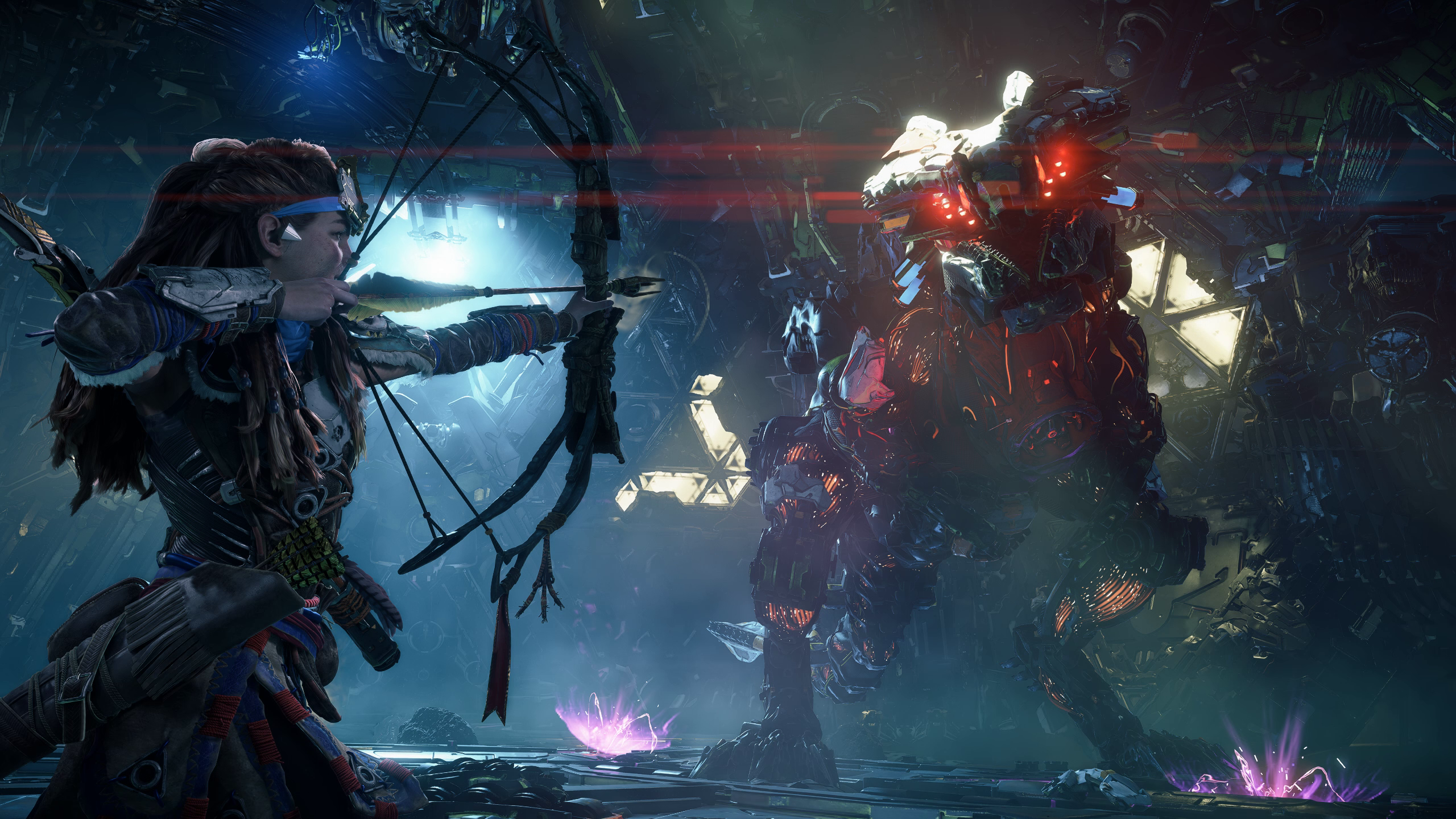
What is it? A hardware-pushing sequel to PlayStation 4 hit Horizon Zero Dawn.
Release date March 21, 2024
Expect to pay $60/£50
Developer Guerilla, Nixxes Software
Publisher PlayStation PC
Reviewed on AMD Ryzen 7 7800X3D, RTX 2080 Super, 32Gb RAM DDR5
Steam Deck TBA
Link Official site
Cor! Look at those swaying aquatic plants as you dive underwater, ready to hide from mechanical foes in "stealth kelp" (yes, that’s actually what it’s called)! Look at the neon lights that form the cyber-ghost of Las Vegas above the post-apocalyptic dunes! Look at the lush grass as you stoop down to slowly pick up more sticks (okay, you can turn this off)! Horizon: Forbidden West is a technical tour de force for Guerilla Games and its proprietary Decima Engine. But, while the tech has certainly evolved, little else has, making for a disappointing sequel in a series that was once packed with promise.
The gorgeous visuals at least make this a game that feels right at home on PC, where its ambition can be pushed further. With a good enough rig, this port can meet and exceed what’s still one of PS5’s most resource hungry titles—able to match its speedy open world fast travel, and deliver higher framerates while retaining a high level of detail (it’s a trade-off between either on console). DualSense and Ultrawide support sweeten the deal. Even on less powerful machines, this is a game that runs well and feels responsive in action.
Even on my relatively mid-level rig, it was great to see how well the game ran at 1440p with a 144hz refresh, the DLSS making the graphics a treat on High, and definitely outperforming my PS5 experience on the same 1440p monitor. The settings are well implemented too, offering a clever overlay over the game rather than just a menu, so you can see the visuals update as you make your adjustments. I only experienced some slowdown in especially busy set-pieces, and occasionally for a moment when loading into a big area.
What is noticeable is how the performance tanks as soon as you reach the DLC expansion, the Burning Shores. The included DLC was only available on PS5 on consoles, eschewing the PS4 release. If there was ever any doubt as to why, the reasoning is clear in this port. The denser foliage, large amounts of water (including geysers), and hordes of enemies forced me to adjust settings down to keep a steady framerate. Though it has to be said the game still looks good even on its lowest settings, with important details like the parts on machines still clearly visible. There's some very solid art direction underneath all the sheen.
Past horizons
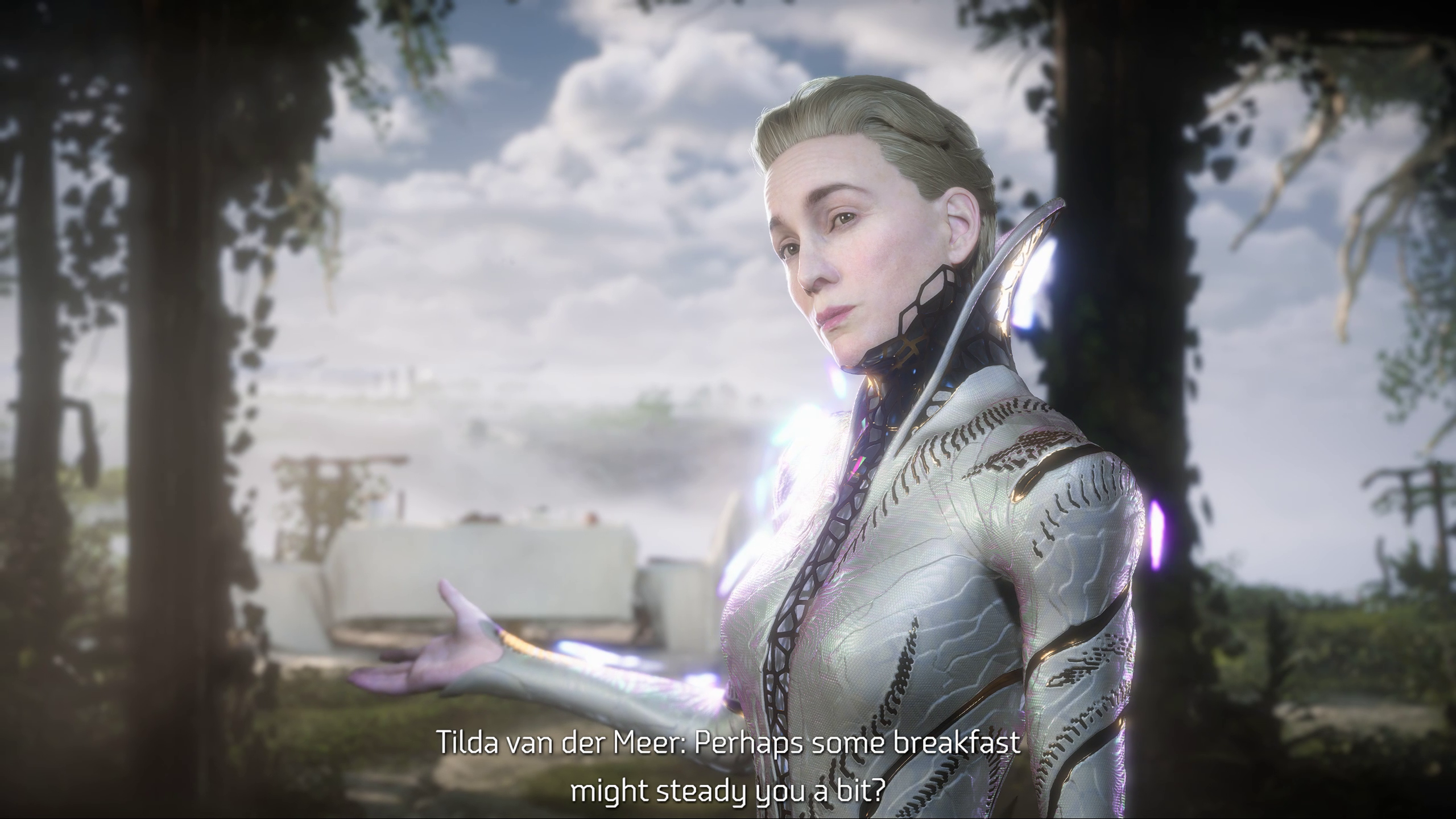
A new land, new cultures, and new cast of characters still ends up feeling like a game going through the motions.
Aloy’s first journey was more than the sum of its robotic parts. Saving a new civilisation risen from the post-apocalyptic ashes of humanity’s own hubris, Aloy used that dead world’s knowledge to put the past to bed and allow the new world to begin to flourish anew, living alongside its nature-reclaimed cities and animal-like machines. But rather than following that through, Forbidden West feels just as obsessed with replicating what came before as some of its antagonists. The first game’s genuinely intriguing setting begins to feel repetitive. A new land, new cultures, and new cast of characters still ends up feeling like a game going through the motions.
The main threat here feels like it's stepped out of a different sci-fi world—all slick, curved metal and personal forcefields—that doesn't gel with one where tactile dino-robots with exposed moving parts roam. It’s aesthetically jarring, and it feels like it undermines what made Horizon special to begin with.
It’s harder to get behind Aloy’s quest here too, as she seems world-weary to a deflating degree—if she's not invested anymore, why should I be? The game’s tutorial questline is about breaking up a union work stoppage, and she keeps aggressively butting heads with other characters from there—often coming off like a caricature of a smug atheist, thanks to her knowledge about the truth behind the machine gods many of the world’s culture’s revere.
While allies from the first game do return, Aloy’s abrasiveness means you don’t spend as much of the game with them as you’d like. It’s especially frustrating as Varl—one of the best and most underutilised characters from the first game—is constantly pushed aside by Aloy. Even though he ultimately adds a lot to the game, it feels like a lot of his character development happens off-screen as a result.
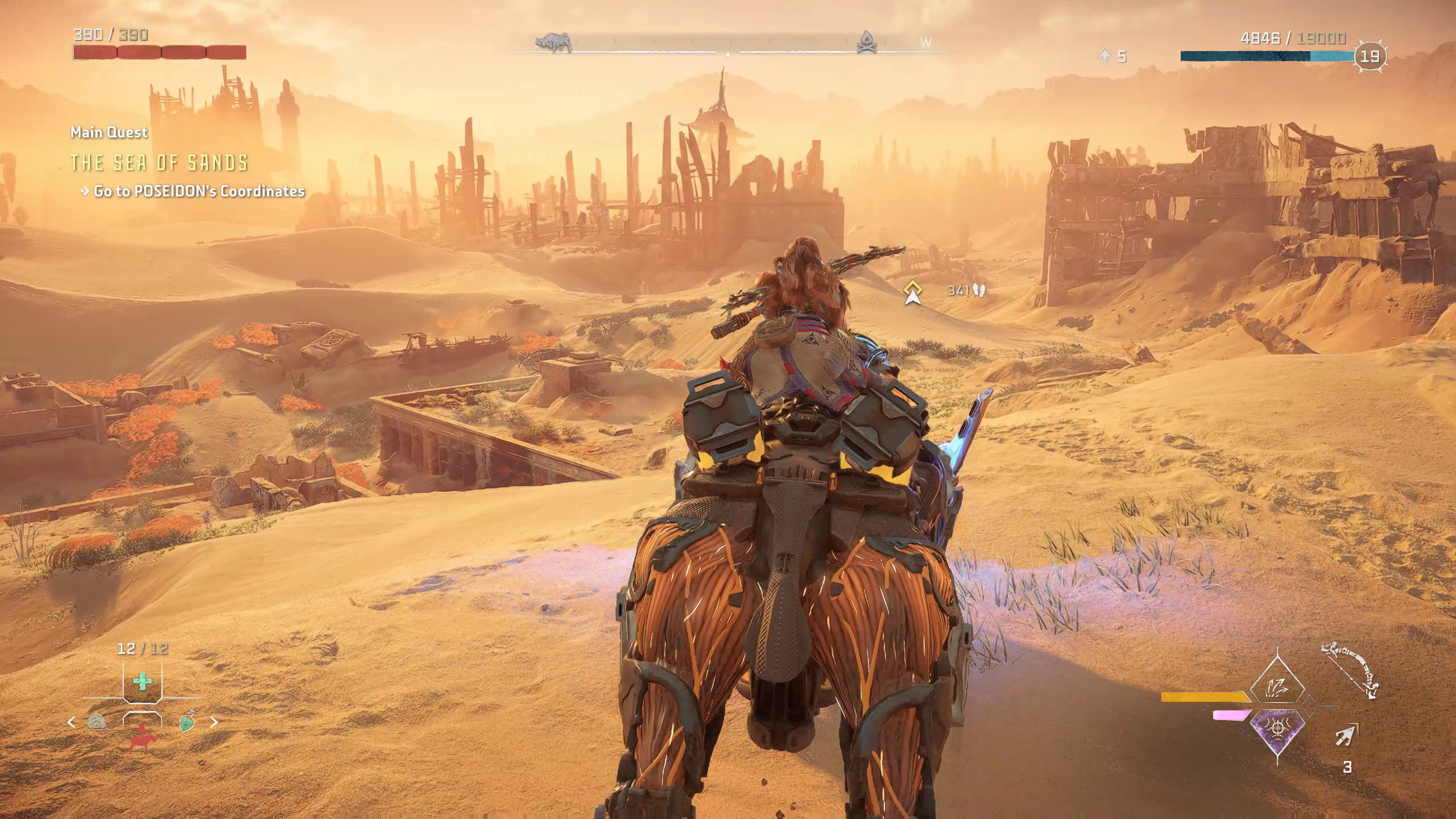
Once unleashed into the wide open world you’ll find everything is structured very similarly to the first game. There’s a legion of checklist activities to keep you busy: Tallnecks to climb and scan the map; robot-creating Cauldrons to explore; outposts of human enemies to massacre (the sickening thunk of arrow hitting skull is both sickening and satisfying in equal measure). And, of course, a litany of side-quests, often giving you reason to explore the map’s nooks and crannies (and discouraging you from doing so ahead of time—scoop up the quests first!).
While the climbing controls enabling Aloy to scrabble and leap around the world are now much more naturalistic than the very linear manoeuvring in the first game (trust me, it’s not aged as well as you might remember), it sometimes conflicts with how gorgeous Forbidden West is, awash with high-fidelity foliage and rocks everywhere you look. There’s so much visual noise that it can be really hard to parse points of interaction. Some surfaces are fully climbable, some aren’t. Prepare to hit the scan button a lot to have your Focus highlight what you can grab, or—better yet—select the option to have those highlights on all the time. The world is beautiful, but I'm not sure you can call it a success if the best way to play through it is with a permanent overlay.
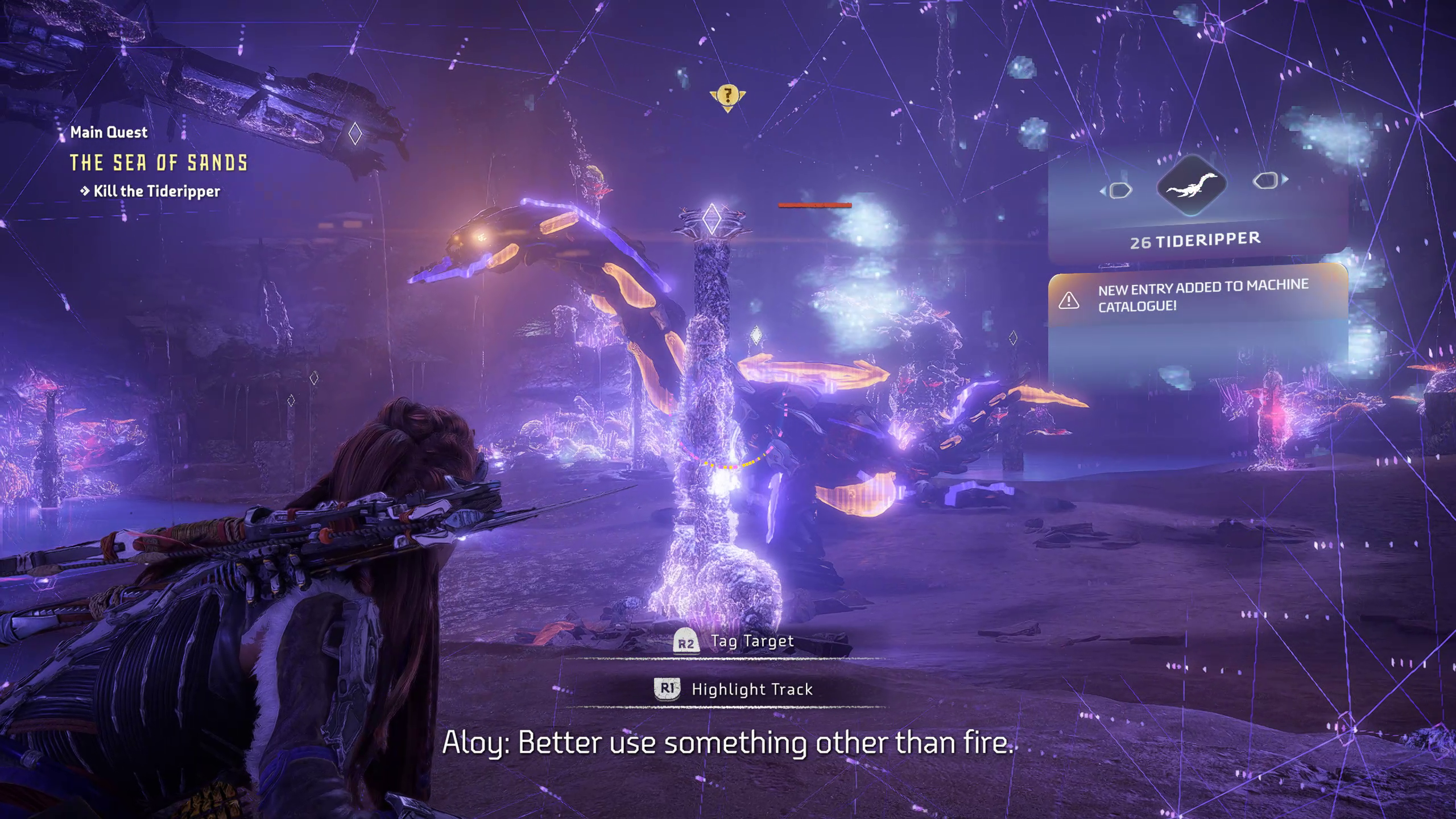
Jumping puzzles are best approached with the knowledge that Forbidden West is looking for as little input from you as possible.
Even though it’s an improvement on Zero Dawn, it still feels a step behind competitors like Assassin's Creed. Jumping puzzles are best approached with the knowledge that Forbidden West is looking for as little input from you as possible, ideally seeing you just lightly titling the stick and tapping jump only when you absolutely can’t progress any further. Even then, Aloy’s pathing can frequently get a little confused, sending her tumbling.
Much was made of the glider pre-release, but it adds very little to exploration, with its best function being to save you from fall damage. It’s hard to get much distance with it given how quickly you descend, and a lot of the map simply doesn’t make much use of it. Perhaps the result of the game being developed to support PS4 platforms, though an end-game unlockable flying mount suggests this isn’t the case.
Other upgrades are even more perfunctory. Besides being one of the slowest and most prescriptive grapples in gaming, the pullcaster also allows you to open specific vents and pull down walls. The igniter allows you to explode open different, marked walls. The vine cutter allows you to destroy ivy covering, you guessed it, specific doors and walls. The diving mask fares better, as some areas have some rather pretty, if basic underwater exploration.
Beast wars
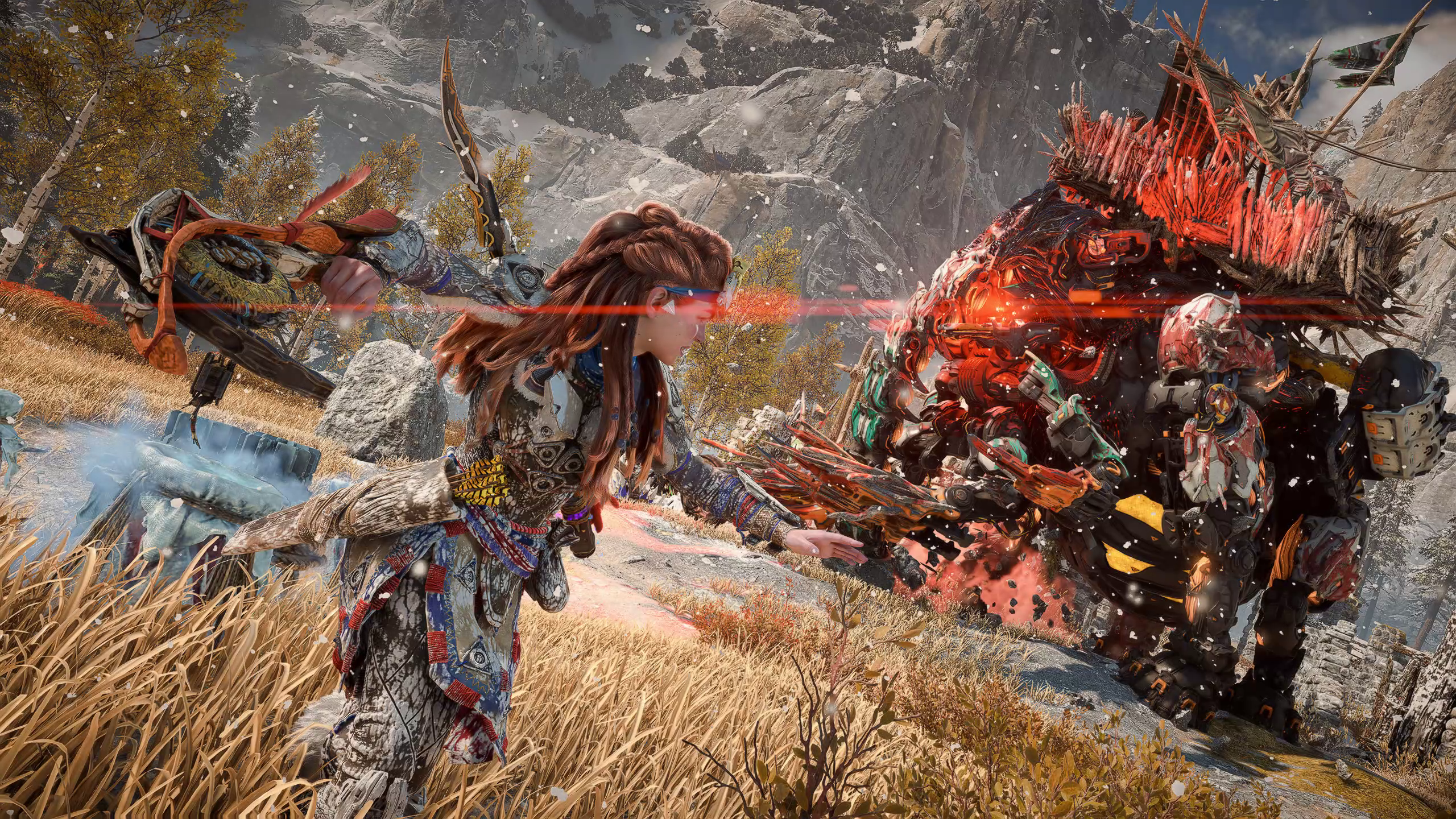
For all the jumping around and the open world, Horizon is a third-person shooter at heart, built around some wonderfully hand-crafted feeling weaponry. There’s a real tactility to combat, especially when you fight the big mechanical creatures.
Nightmarish, robotic takes on real-life animals and dinosaurs, these often huge foes are great fun to fight—from a towering cobra-thing dripping poison, to a massive armoured tortoise, to dangerous machine crocs who prowl the waterways. Covered with discrete parts that you can tag and analyse, it almost feels like pinball as you ping them apart piece by piece. It’s a rare area where the extra detail achievable with the game’s tech really adds to the experience. Take aim with your bow at a beast's glowing sensors for massive damage, slowing down time while you aim; hurl a bomb at a huge sac of flammable material on their body for a deeply satisfying boom; throw down a trip caster in their path as they charge to throw them completely off balance; or use the ropecaster to tie them down to one spot and then use your spear to wail on them. It's a really satisfying system with far more tactical depth than you'd usually expect from this kind of blockbuster action game.
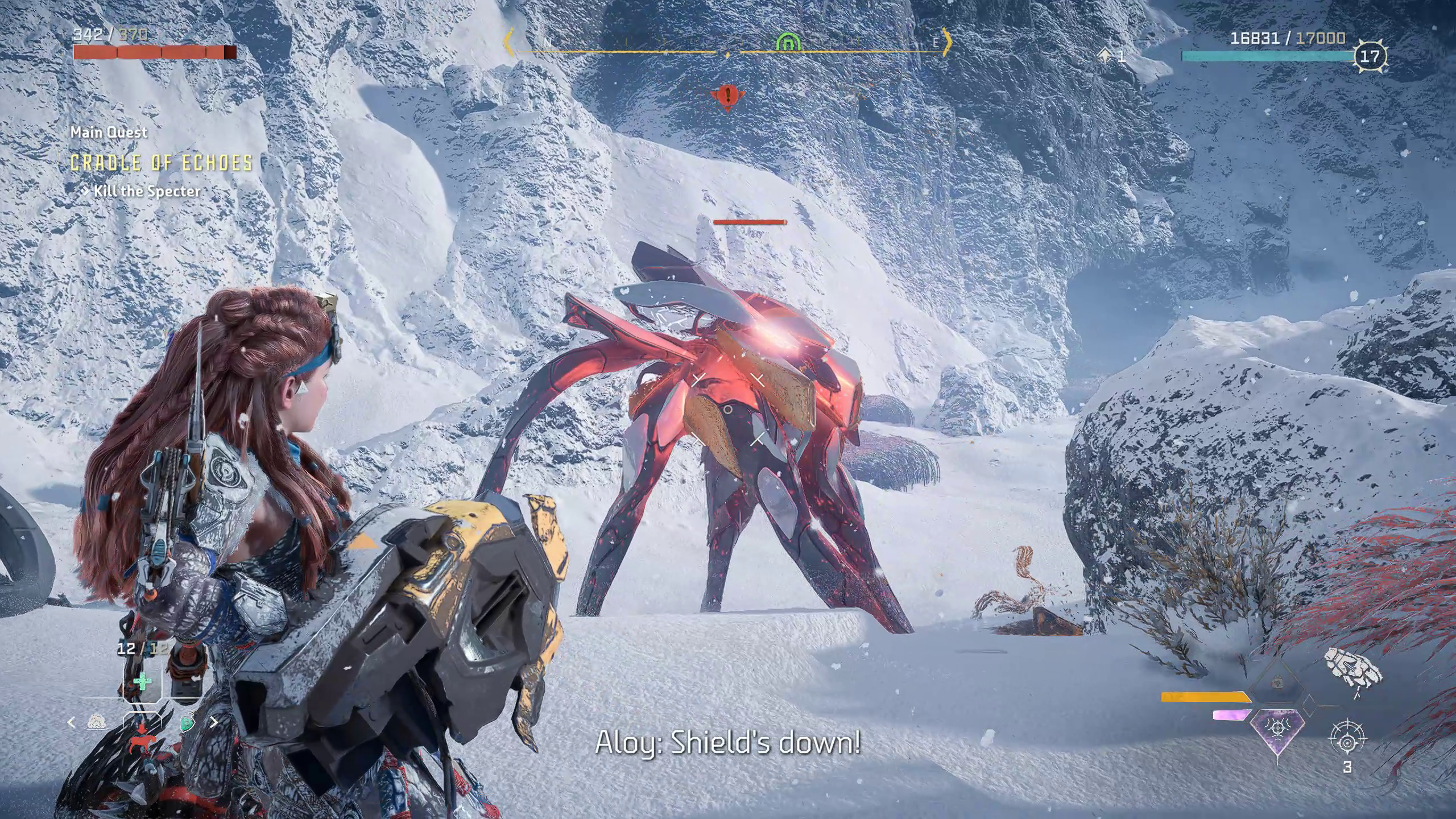
Brand new weapons are great additions, from the shredder gauntlet that hurls a prickly orb that rips off armour plating, to the spike thrower that hurls explosive javelins.
Even returning weapon types have been given fresh forms in Forbidden West. Each mode of fire gets its own slot on the weapon wheel now, meaning your five pieces of gear can in practice feel like ten. Brand new weapons are great additions, from the shredder gauntlet that hurls a prickly orb that rips off armour plating, to the spike thrower that hurls explosive javelins. Weapon techniques are bright spots in an otherwise dull upgrade tree, granting even more powerful mode of fire, like chewing through a whole clip of the rapid-fire boltcaster in one brutal burst or firing a spread of five arrows at once from your bow. The biggest robot dinos require you to use every trick in your arsenal, pushing your ammo to the limit and forcing you to really take note of how they move and which weapons work best against their specific assortment of parts.
It’s a shame, then, that so much of Forbidden West focuses on enemies besides the series’ iconic robosaurs. The slicker sci-fi elements introduced in the story give rise to some smooth and utterly dull plastic robots and legions of annoying human guards. The best fight in the game is with a Slaughterspine, one of the game’s new machines introduced late game that’s wonderfully huge and dangerous. The final boss fights, however, including those in the DLC, are just dudes with mech suits or futuristic armour, and they feel lacking in the series' distinctive flavour.
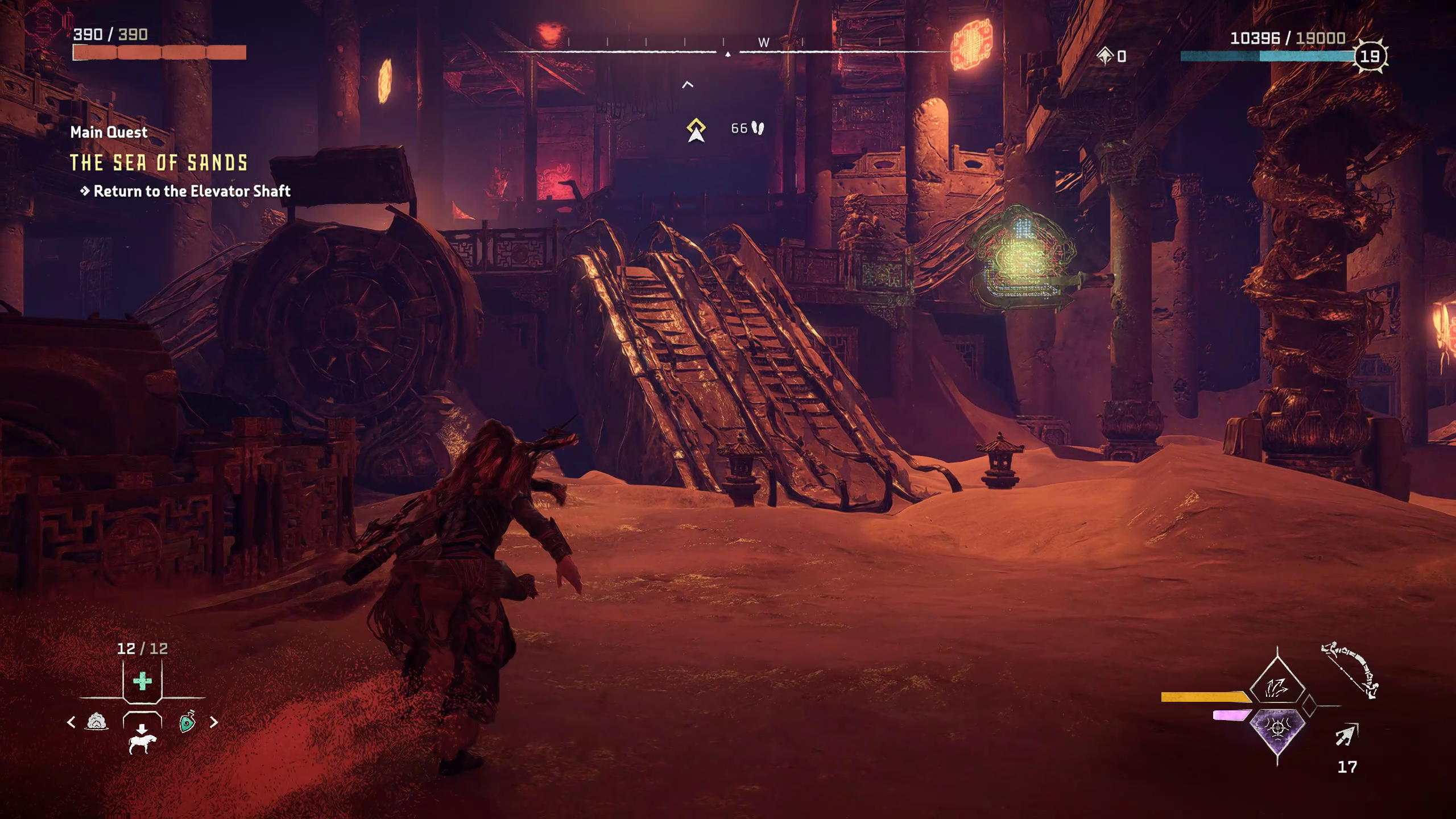
That expansion, The Burning Shores, comes packaged in with this port at launch, and it remedies some of the base game’s problems. Set in a Los Angeles devastated by tectonic plate drift, flooding has resulted in several tropical islands. That means lots of elevation to use your glider (plus geysers to throw you further into the air), and lots of water to swim around and explore, livening up the traversal. Even the narrative fares a bit better, thanks in part to Aloy finding a very likable new companion (and romance option), a bold seafarer named Seyka.
But unfortunately it’s all rushed to fit into the smaller scope of an expansion. Aloy and Seyka’s relationship is cute, but develops at a frantic pace; as does Aloy’s relationship with the charismatic cult-leader-esque antagonist who, after they share one conversation, immediately kicks off the final boss fight. There’s the frustrating feeling that Burning Shores is closer to what Forbidden West could have been—were the studio able to more cleanly move forward. As it stands, however, the rollicking machine combat ends up only a small part in a pretty boring world. Struggling to keep up with other, better open worlds, this sequel doesn’t recapture the Zero Dawn magic, as desperately as it tries.







